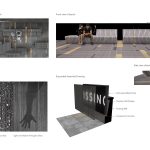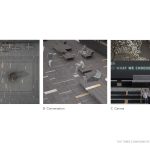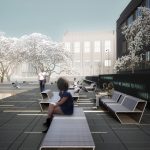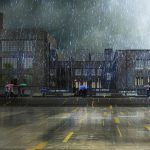Markers connect a place to its historic and future meaning. If a marker’s effectiveness is to endure in this way, its presence needs to be imbued with symbolic value based on cultural, historical and political context. Scudder Plaza is a prominent site at the crossroads of Princeton’s campus, adjacent to the Woodrow Wilson School. We propose “Missing Voices” in response to Princeton’s request for a Woodrow “Wilson Marker”. This full-site intervention is incremental in nature and intentionally incomplete, leaving room for interpretation and engagement over time. “Missing Voices” is not ambivalent. It recognizes Wilson’s racism head-on by channeling the voices of people he did not listen to: women, people of color, immigrants.
Architecture, Construction & Design Awards 2018
Second Award | Category: Cultural (Concept)

| Project Details | |
| Architect: | Studio Joseph |
| Primary Design Team (individuals with their project roles, not job titles): | Studio Joseph and Bluecadet |
| Wendy Evans Joseph, Principal in charge; Monica Coghlan, Design Associate; Hannah Pavlovitch, Designer Josh Goldblum, Principal in charge; Brad Baer, Partner | |
| Interactive Experience Design Firm: | Bluecadet Bluecadet Josh Goldblum, Principal in charge, Brad Baer, Partner Devon Burgoyne, designer, Sara Pasch, Sr. Strategist |
| Architecture Firm: | Studio Joseph Wendy Evans Joseph, Principal in charge, Monica Coghlan, Design Associate, Hannah Pavlovitch, Designer |
| Landscape Architecture Firm: | Ken Smith Workshop |
| Structural Engineer: | Silman Nate Oppenheimer, Partner in charge |
| Country: | United States |
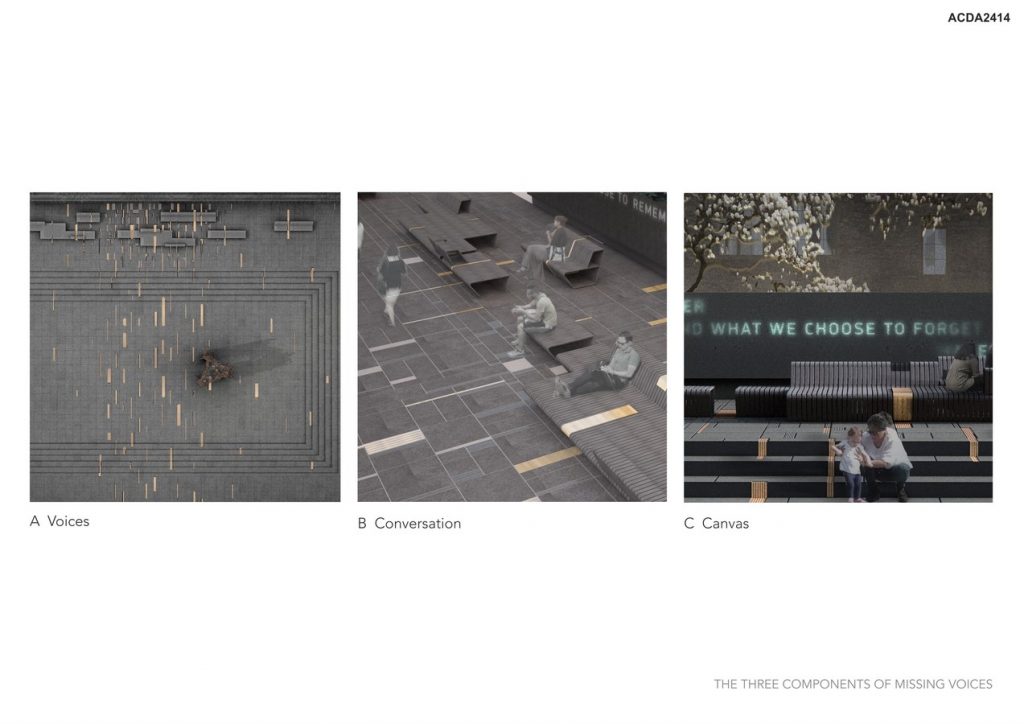
©Studio Joseph
The design includes three deliberate gestures that offer opportunities for physical and digital community engagement. Both a disruption and convener, the blank bronze plaques embedded in the pavement allow for new voices. We invite the community to share their voices via educational programs and artistic performance in an area that supports conversation. A translucent wall called the “canvas,” uses a digital platform that allows anyone to populate the wall with text, data, moving image, and even sound. A social sharing option also promotes these items across select platforms outside the plaza.
It should be noted that Princeton University required that the rectangular fountain and its large bronze sculpture and surrounding trees remain along with dedicated pedestrian paths.

©Studio Joseph
Project Synopsis
“Missing Voices” is an urban intervention that supports all members of the community without barrier to entry. Three equally important and interrelated parts work together to interpret the legacy of President Wilson.
- Voices: Surging forth from the Wilson School entrance, bronze plaques embedded in the granite paving demonstrate the power of incremental over monumental; disruptive and activating. Bronze, the ubiquitous, quintessential material of commemoration, punctuates the existing gray stone. Without words, they carry implicit messages changing over time.
- Conversation: Oversized benches encourage the exchange of ideas, acting as an informal outdoor classroom for small groups or catalysts for directed learning. Wood slat construction of the same 2-inch dimension integrate the bronze markers. They link the incremental over monumental architecturally as part of community placemaking for both “town and gown”.
- Canvas: A media display runs the length of the site. This data-driven presentation can be seen both day and night. Words emanate from behind translucent concrete, an innovative material is authentic in its presence and holds the unique property of allowing light to pass through the use of embedded fiber. When active, words appear in a strikingly elegant and robust way.
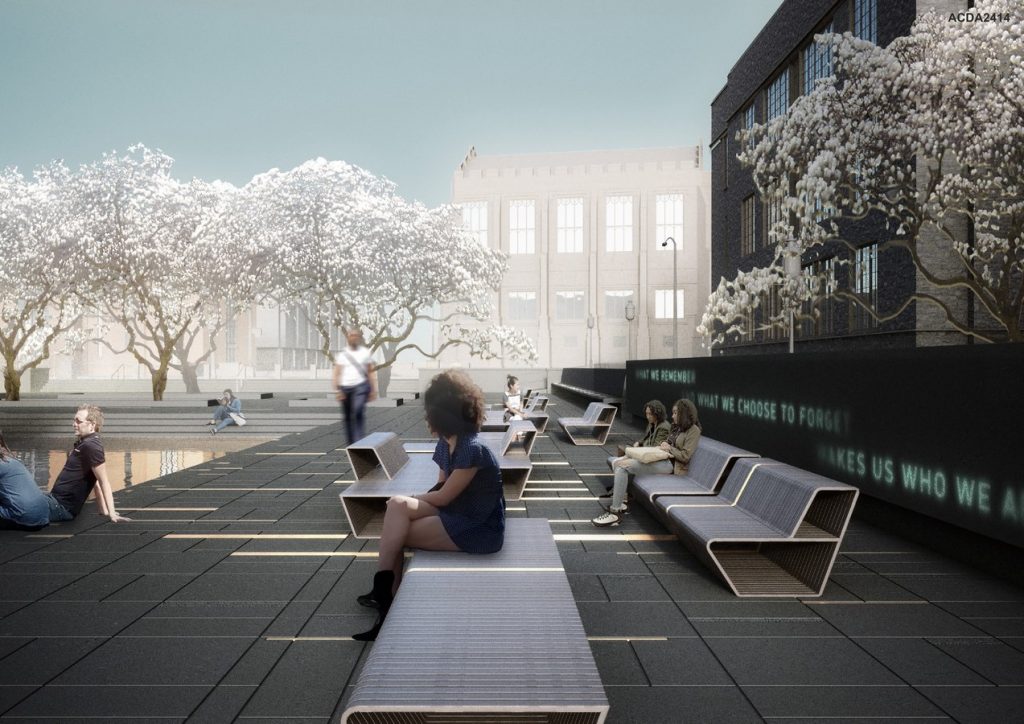
©Studio Joseph
Canvas is a digital format for data, performance imagery and other means of free expression. Wilson prevented women and people of color from achieving their human and civil rights. Programmed without barrier, “Missing Voices” retaliates by giving public expression to everyone. Now we all can listen and act.
- ©Studio Joseph
- ©Studio Joseph
- ©Studio Joseph
